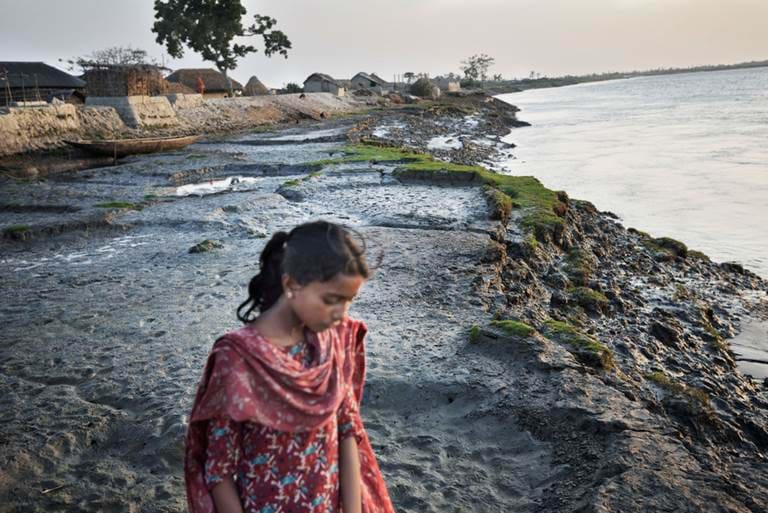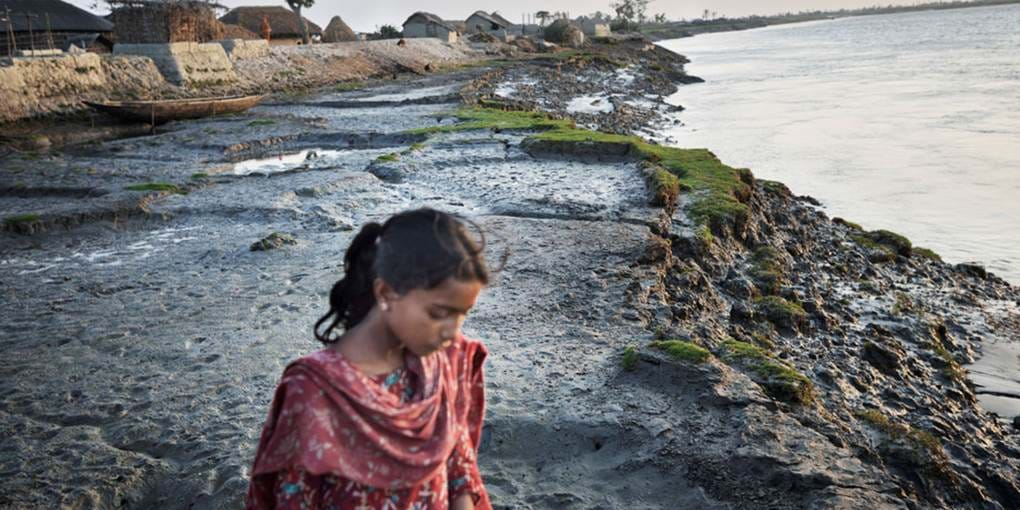Climate change will affect human migration patterns. Current global estimates of migrations induced by climate extremes vary widely, from between 50 million and two billion people. It is difficult to quantify population movements using existing surveys methods, but a novel technique based on mobile phone data offers the opportunity to follow migration patterns in greater detail than ever before. As Dr. Linus Bengtsson explains, “This project proposes methods that can fundamentally change the way we understand the long- and short-term effects of climate change on vulnerable populations

Erosion of river banks causes loss of farmland and leads to displacement of poor vulnerable communities in the deltas of Bangladesh. River bank erosion is exacerbated by tropical cyclones like Mahasen. Photo credit: Kadir van Lohuizen / NOOR
Bangladesh is at the frontline of climate vulnerability. Its crowded, low-lying coastal areas are exposed to frequent flooding from tropical cyclones and rising sea levels. For the first time, researchers have used data from a mobile phone network to quantify population flows following a major climatic event. Analysis of highly detailed population movements following Cyclone Mahasen found unexpected results. High-risk behaviour was identified as some people delayed fleeing to safety, but national migration patterns were found to be surprisingly unaffected by the cyclone.
Tracking large-scale population mobility is notoriously challenging, since people move multiple times and across vast areas. A large increase in the population in one area may be due the convergence of small flows coming from different routes at different times. Traditional surveys tend to miss such individuals, as they are carried out in specific areas at specific times and have difficulties catching seasonal patterns. In the aftermath of a disaster surveys are particularly difficult to perform due to logistical problems. Following a natural disaster, people from rural areas may migrate to urban areas for a while, but their informal living arrangements make them invisible to traditional household surveys.
An international collaboration of researchers has developed a way to map displaced populations’ journeys. High rates of mobile phone ownership in Bangladesh (89% of households have at least one phone) provide a rich source of data on climate-vulnerable populations. Data routinely collected by network operators records the nearest mobile phone tower each time a call or text is sent, and timestamps the record. The data are ‘de-identified’, so it is not possible to know the individuals behind the phones, but researchers can map the anonymous phones’ journeys on a daily, weekly and monthly basis.
The researchers analysed records from 6 million mobile phones in southern Bangladesh to identify population movements in response to Cyclone Mahasen. Their analysis revealed aspects of both minute-to-minute evacuation, as well as long-term migration patterns. Whilst cyclone shelters were used by some, others left their homes late or not at all, in order to safeguard their property and assets. Data on such high-risk behaviour can help target messages for future disaster preparation plans. Researchers found that the yearly migration patterns in this region were virtually unaffected by the cyclone, but dominated by the seasonal migration accompanying the annual Monsoon and religious festivities.
As Dr. David Wrathall explains, “By putting together data at such a large scale, we can gain new insight on current modes of adaptation, resilience, and the implications of climate change impacts on long-term economic and social development.”
The detailed high-resolution analysis that is desperately required for more accurate estimates of large-scale population movements is not possible using traditional survey methods. This type of analysis can complement traditional survey methods to provide timely, accurate and cost-effective information for disaster relief teams and enable long-term studies of climate refugees. Mobile phone data can be used to identify areas with large numbers of migrants, so that they can receive support and targeted resources. This research may finally allow scientists to understand how climate change is impacting the planet’s migration patterns.
